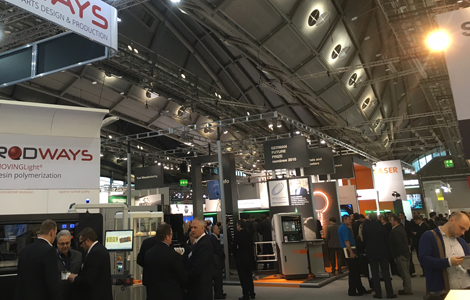
The show floor of Formnext bristling with activity
Among the towering stands at the Frankfurt Messe there was a lot to be uncovered at Formnext, the latest 3D printing exhibition in Europe.
All the familiar names were there, but there were more than a few eye-catching technologies to take our interest.
Here’s our four key takeaways from the event:
1 – Get yourself a robot butler
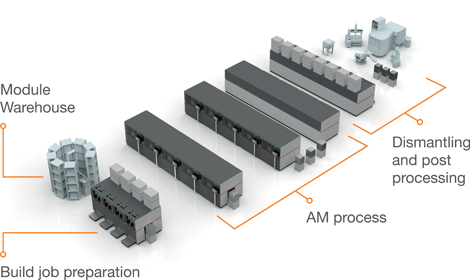
A prototype plan for how Concept Laser’s future factory would plan out
The key to what the Germans are delicately calling ‘Robust Production’ is seemingly all down to involving robots to do our bidding in the ‘AM factory of tomorrow’.
Concept Laser unveiled a prototype system for such a time when these giant metals 3D printers are lined up in rows, with robotic butlers ferrying build platforms from printer, to cool down chambers, to post processing terminals.
Henry Ford would be proud (mostly by the elimination of humans and their pesky unions…), as the production line genuinely seems to be the direction that all the big metals companies are heading in, taking the advantages of custom end-use parts to the mass manufacturing world.
“In essence,” says Dr. Florian Bechmann, head of R&D at Concept Laser, “it is about splitting up build job preparation/build job follow-up processing and Additive Manufacturing in any number of combinable modules.
“With comparatively large build envelopes, build jobs can be carried out with a time delay. The intention is that this should drastically reduce the “downtimes” of previous stand-alone machines.
“There is plenty of potential here for improving the level of added value in the production chain. In contrast to purely quantitative approaches of previous machine concepts, we see here a fundamentally new approach for advancing industrial series production one step further.”
Concept Laser claims its prototype system should be a full blown reality by the end of next year, while those interested will have to source their robots from a third party.
2 – Big players, but from different neighbourhoods
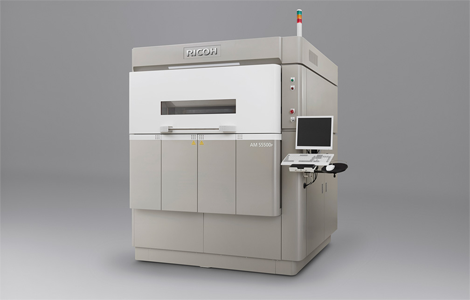
Ricoh’s entry into the 3D printing arena – the big build area AM S5500
It was of no real surprise to see the likes of Ricoh and Trumpf unveil their first true entries to the 3D printing market.
Ricoh’s AM S5500P is a large-scale SLS technology (550×550×500mm) that has apparently been proven on the floors of Japan’s automakers over the last couple of years.
Trumpf, on the other hand, stuck with metals, showcasing its brand new TruPrint 1000 LMF, the smallest of its upcoming range of metals laser sintering machines. Sitting somewhere amongst its huge product line of industrial machines, the TruPrint comes somewhere between its laser cladding machines and its high-precision laser cutting units.
The big for both new entries into the world of 3D printing is their backgrounds – depositing fine dots of inks on paper, versus slicing and stamping metals – yet both are so totally focussed on industrial applications that it is the grown-up antithesis of 3D printing’s previous front page image of consumer toys.
3 – Refining the desktop
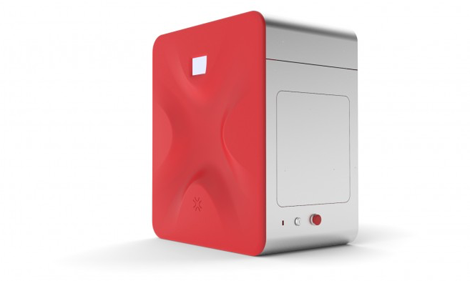
Desktop SLS is promised by Sinterit
This time last year we were amazed by the sheer number of crappy desktop FDM machines that were flooding onto the market, but now there’s a higher end section starting to leave all that behind.
This proved our first time to get up close to the Sinterit Lisa, a desktop SLS machine. Although diminutive in size, the Lisa (the name does take some getting used to – something akin to naming your pet dog David) has a 150x200x150mm build area, with multi-zone heating and a wide variety of materials in development with its partners.
SLS on a desktop, from a machine the size of a hefty CAD workstation tower, regardless of quality is nothing to be sniffed at, and the team behind it spoke confidently about its future developments.
Add this to the current next-gen SLA and DLP projectors such as the Formlabs Form2 and Autodesk Ember, plus the expectations of upcoming FDM printers, increasingly fine-tuned for professionals from the likes of Makerbot, Ulitmaker, and suddenly the desktop seems like an exciting place to be right now.
4 – Industrial 3D printing is growing up quick
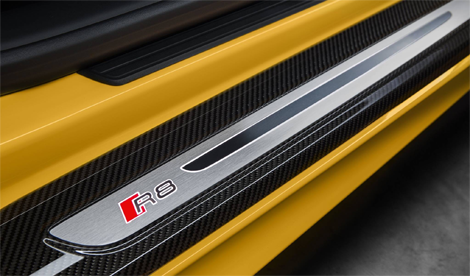
Audi showcased its manufacturing, showing past, present and future means of making cars like the R8
Automotive powerhouse Audi had an exhibition stand at Formnext, which until you got up close and past the gleaming new R8 model, looked like something more accustomed to an automotive trade fair.
The reason it was taking part was to showcase its manufacturing abilities, for which 3D technologies play a huge part – from digital sand casting for near-net shape tooling, to direct metals printing.
Although there was nothing unexpected, it was a sign that companies are beginning to open up about what they are doing (in Audi’s case the reason was to try and flog some of its manufacturing services it does on the side).
When showing how it made cars in the past, how it manufactures them now, and how the future is set to change, you become staggeringly aware that this is all in a space of a dozen years or so, and that the really switched on companies like Audi are already on the cusp of future manufacturing.
The best revelation was that Audi is already planning to 3D print the next generation of Lamborghini doors as a single piece (currently, over 20 parts) – an example of a technology growing up very fast indeed.

